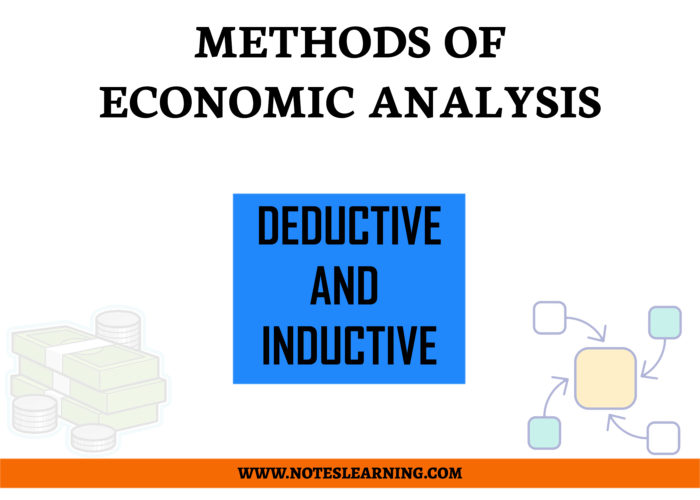Deductive method of Economic Analysis
Introduction
The deductive method is also known as the analytical, abstract, or prior method. Deductive method consists in deriving conclusions from general truths, takes a few general principles and applies them to draw conclusions.
The deductive method derives new conclusions from fundamental assumptions or from truth established by other methods. We start from unchallenged elementary or rudimentary assumptions/ facts and then arrive at conclusions(build a hypothesis or theory) using logical analysis or our own analytical abilities.
Deduction involves four steps:
- Selecting the problem.
- The formulation of assumptions on the basis of explored problem.
- The formulation of hypothesis through the process of logical reasoning for drawing inferences.
- Verifying the hypothesis.
Theories and Principles that follows Deductive Method of Economic Analysis
- Law of Supply and Law of Demand
- Rational Choice Theory
- Theory of Comparative Advantage
- Marginal Analysis
- Theory of Production
- Theory of Economic Growth

For example: The general principle states that an increase in the cost of inputs will result in an increase in the price of the relevant output (product), and this principle is known as Cost Push Inflation. When we adopt the theme of cost push inflation for a specific product like computers or cars, we label the process as the deductive method.
Merits and demerits of Deductive Methods of Economic Analysis click here
Inductive Method of Economics Analysis
Introduction
Inductive method which is also called empirical method was adopted by the “Historical School of Economists”. It involves the process of reasoning from particular facts to general principle. This type of reasoning flows from facts to theory. First, we collect information and facts and then move towards providing evidence using economic theory and facts. This method formulates principles using the sub-methods- Observations, Experimentations, Statistical methods.
Induction “is the process of reasoning from a part to the whole, from particulars to generals or from the individual to the universal.” Bacon characterized it as “an ascending process” in which one collects and arranges facts, and then draws general conclusions.
Inductive Reasoning lead to development of two theories : The Engel’s Law of Family Expenditure and the Malthusian Theory of Population.
Engel’s Law of Family Expenditure
- As the family income increases, the percentage of income spent on food decreases, although the actual amount increases.
- The percentage expenditure on clothing, house rent, light and fuel remains the same for any income level.
- The percentage expenditure on education, health and recreation increases with every increase in the income of the family.
Malthusian Theory of Population
The Malthusian Theory of Population is a theory of exponential population growth and arithmetic food supply growth. Thomas Robert Malthus, an English cleric, and scholar published this theory in his 1798 writings, An Essay on the Principle of Population.
He believed that by implementing preventative checks and positive checks, one could control the population to maintain a balance between the food supply and population level. These checks would lead to the Malthusian catastrophe.
Merits and demerits of Inductive methods of Economic Analysis click here
References



1 thought on “Method of Economics Analysis”